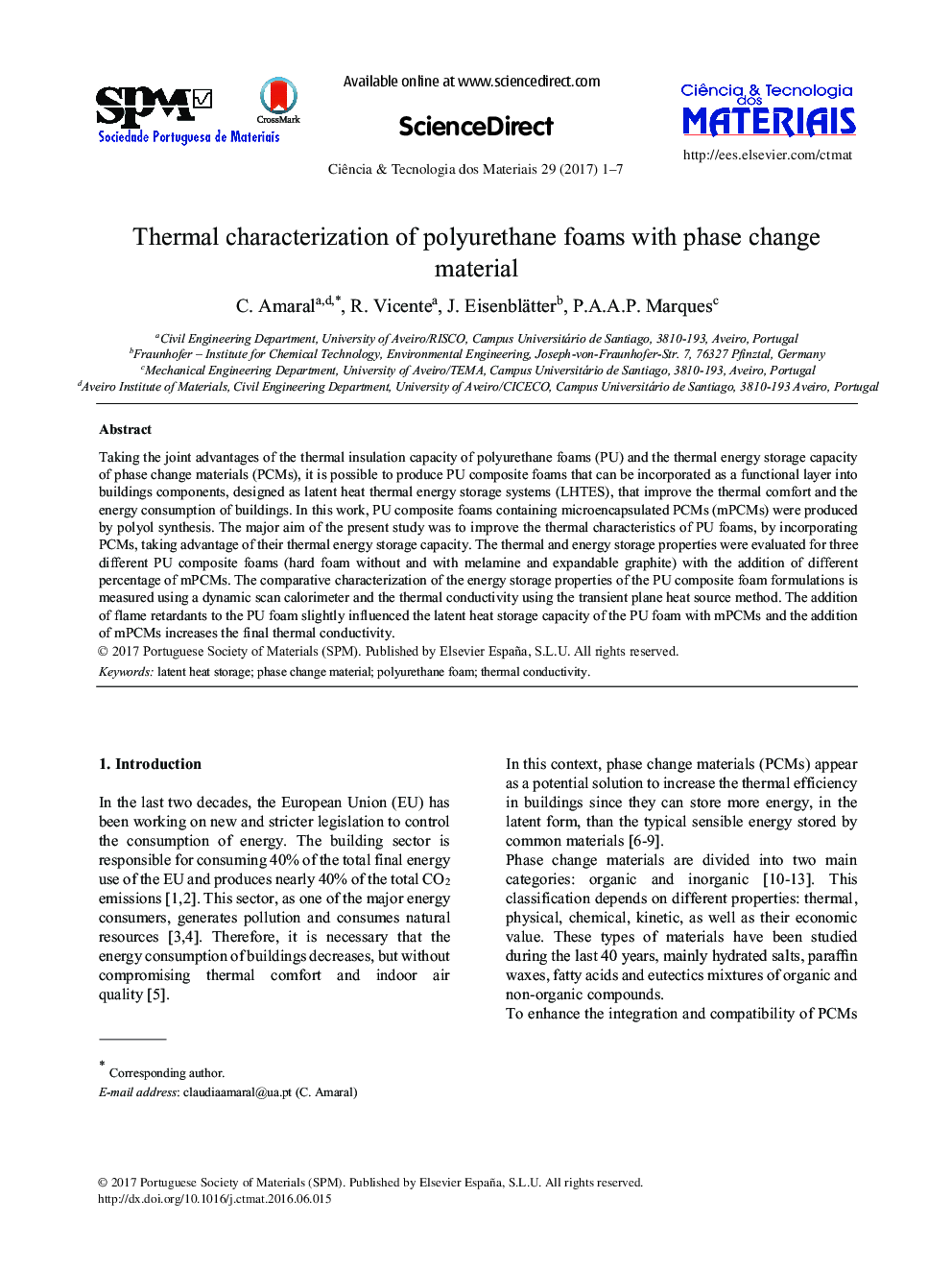| Article ID | Journal | Published Year | Pages | File Type |
|---|---|---|---|---|
| 7211570 | Ciência & Tecnologia dos Materiais | 2017 | 7 Pages |
Abstract
Taking the joint advantages of the thermal insulation capacity of polyurethane foams (PU) and the thermal energy storage capacity of phase change materials (PCMs), it is possible to produce PU composite foams that can be incorporated as a functional layer into buildings components, designed as latent heat thermal energy storage systems (LHTES), that improve the thermal comfort and the energy consumption of buildings. In this work, PU composite foams containing microencapsulated PCMs (mPCMs) were produced by polyol synthesis. The major aim of the present study was to improve the thermal characteristics of PU foams, by incorporating PCMs, taking advantage of their thermal energy storage capacity. The thermal and energy storage properties were evaluated for three different PU composite foams (hard foam without and with melamine and expandable graphite) with the addition of different percentage of mPCMs. The comparative characterization of the energy storage properties of the PU composite foam formulations is measured using a dynamic scan calorimeter and the thermal conductivity using the transient plane heat source method. The addition of flame retardants to the PU foam slightly influenced the latent heat storage capacity of the PU foam with mPCMs and the addition of mPCMs increases the final thermal conductivity.
Related Topics
Physical Sciences and Engineering
Engineering
Engineering (General)
Authors
C. Amaral, R. Vicente, J. Eisenblätter, P.A.A.P. Marques,
